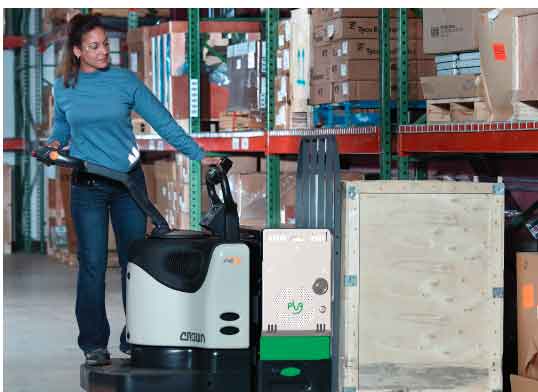In a sign of its commitment to hydrogen fuel cell lift trucks, Amazon last week announced that it has started producing its own hydrogen at one of its fulfillment centers.
Supply Chain Digest Says... |
|
|
In a sign of its commitment to hydrogen fuel cell lift trucks, Amazon last week announced that it has started producing its own hydrogen at one of its fulfillment centers.
Amazon says it has worked with Plug Power – a company that markets a variety of hydrogen-related products - to install its first electrolyzer, a system that splits water molecules to produce hydrogen, at a fulfillment center in Aurora, Colorado.
Plug Power also sells what it calls hydrogen engines that can fit into existing electric fork trucks.
The Amazon announcement says the electrolyzer is supporting the needs of about 225 fork lift trucks deployed at the facility, though it actually has the capacity to power as many as 400 hydrogen fuel cell-based lift trucks.
This is the first time Amazon has tried to make its own hydrogen on site. The alternative is to have hydrogen trucked into a facility, as has been the case at Amazon until now.
“On-site production will make the use of hydrogen even more energy efficient for certain locations and types of facilities,” Asad Jafry, Amazon’s director of global hydrogen economy, said in the announcement.
He added that “Hydrogen is an important tool in our efforts to decarbonize our operations by 2040.”
Hydrogen fuel-cell lift trucks are zero-emission vehicles, producing only water vapor when operating.
However, that is not true of the process of producing the hydrogen fuel. According to an article on theVerge.com web site, most hydrogen today is made using fossil fuels, primarily through a reaction between steam and methane.
That process releases CO2.
Another issue has to do with methane leaks during production, with methane being a more powerful greenhouse gas than CO2 in terms of its impact on climate change.
But the Plug Power hydrolyzers using a different technology. Rather than using methane, its system uses electricity to split water into hydrogen and oxygen. If that electricity is generated by renewable sources of energy such as wind or solar, it’s considered to be “green hydrogen.”
(See More Below)
|
CATEGORY SPONSOR: SOFTEON |
|
|
| |
|
|
While this process largely eliminates the greenhouse gas emissions, it costs a lot more to produce the hydrogen than the methane-based approach.
Power Plug says that it has delivered about 17,000 fuel cells for forklifts to more than 80 distribution centers across North America since 2016.

In 2022, after working with Plug Power for several years, Walmart announced it would roll out the company’s technology to about 9500 lift trucks in its US DCs.
But to date, almost all of the hydrogen used to power those lift trucks was produced remotely and delivered via special tanker trucks to users, which then require on-site storage and refueling systems.
And the first Amazon electrolyzer deployed is not producing green hydrogen, relying on the existing electrical grid to power the hydrogen producing process, with the electric utililty still relying on fossil fuels for about 60% of the energy sources it uses.
According to theVerge.com, Amazon is looking at how it might power the electrolyzers with renewable energy generated on site, but there is no timeline for when that might happen.
Do you have any thoughts on this Amaon plnn? Let us know your thoughts at the Feedback button below (email) or in the Feedback section.
|
|
Jorie Fox
Title, Company |
Posted on: Jan, 16 2024 |
|
| Where is Amazon getting the water to support this, and how much water is used in production? It's not like Colorado, which is known for its water supply. |
|
|